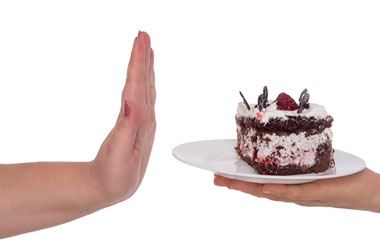 If munching sugary snacks like candies leave you wanting more, that’s the sign of a sugar craving. Satisfying your cravings by indulging in a small quantity of sugary snacks is absolutely fine, but overeating sugary things is the worst thing you can do. Eating too much sugar can cause obesity and tooth decay, and lead to medical conditions such as type 2 diabetes, heart disease, and cancer.
If munching sugary snacks like candies leave you wanting more, that’s the sign of a sugar craving. Satisfying your cravings by indulging in a small quantity of sugary snacks is absolutely fine, but overeating sugary things is the worst thing you can do. Eating too much sugar can cause obesity and tooth decay, and lead to medical conditions such as type 2 diabetes, heart disease, and cancer.
But why do we crave sweet things? In a WebMD article, a dietician and American Dietetic Association (ADA) spokeswoman points out that “sweet” is the first taste humans prefer from birth. Carbohydrates stimulate the release of the feel-good brain chemical serotonin. Sugar is a carbohydrate, but carbohydrates come in other forms, too, such as whole grains, fruits, and vegetables.” The sugar content in natural foods is healthy, but the danger lies in added sugars present in processed foods. The problem arises when we over consume added sugar from many processed foods such as breads, yogurt, juices, and sauces.
The good news is that you can conquer your sugar cravings. Here are 8 tips to do so:
- Consume sugar in small quantities: If you are craving for sugary things don’t binge on it. Instead have it in small quantities like a small cookie or a small sized candy bar. As the WebMD article says, enjoying a little of what you love can help you steer clear of feeling denied.
- Cut back on sugary drinks: Some bottled juices such as soda, energy drinks, sport drinks and fruit drinks contain lots of added sugar. So cut down on these sugary drinks. Many studies have shown that reducing your intake of sugary drinks will significantly reduce sugar intake and help you lose weight.
Choose healthy options such as water (it’s free and has zero calories), sparkling water with a squeeze of fresh lemon, water with mint and cucumber (a refreshing drink in warm weather), herbal or fruit teas (hot or cold) and unsweetened tea or coffee (in moderation). - Consume whole foods: Foods that have not been processed or refined are free of additives and other artificial substances commonly found in processed foods. So include more of whole foods such as whole grains, fruit, vegetables, tubers, and beans in your diet.
- Quality is more important than quantity: If you have a craving for chocolate, choose a good dark chocolate truffle instead of a king-sized candy bar, because dark chocolate is a healthier option.
- Eat full-fat foods: While including fat in your diet, most people tend to choose low-fat foods, thinking they are a healthy, low sugar content option that will help weight loss. But the truth is that low-fat foods contain more sugar and sometimes more calories than their full-fat counterparts. So, when you’re trying to cut your sugar intake, it’s may be better to choose the full-fat version instead.
- Breakfast foods shouldn’t be “desserts”: Don’t load your breakfast with added sugar such as breakfast cereals, pancakes, waffles, muffins and jams. One study found that some of the most popular breakfast foods contain over half of their weight in added sugar. Instead choose a low-sugar option with high protein and fiber at breakfast so that it will help you feel full until lunchtime, preventing unnecessary snacking. Low-sugar breakfast options include hot oatmeal, Greek yogurt, eggs (boiled, poached, scrambled or as an omelet), and avocado.
- Always read the label: Check food labels for sugar before you eat. The closer to the beginning it is on the ingredients list, the greater proportion of sugar the product contains. There are over 50 names for added sugar. Examples include high-fructose corn syrup, cane sugar or juice, maltose, dextrose, invert sugar, rice syrup, molasses and caramel.
- Do brisk walking or other exercises: A brisk walk or running may help reduce sugar cravings. This is because exercise release endorphins, or “feel good” chemicals in your brain, which can help turn off the cravings.